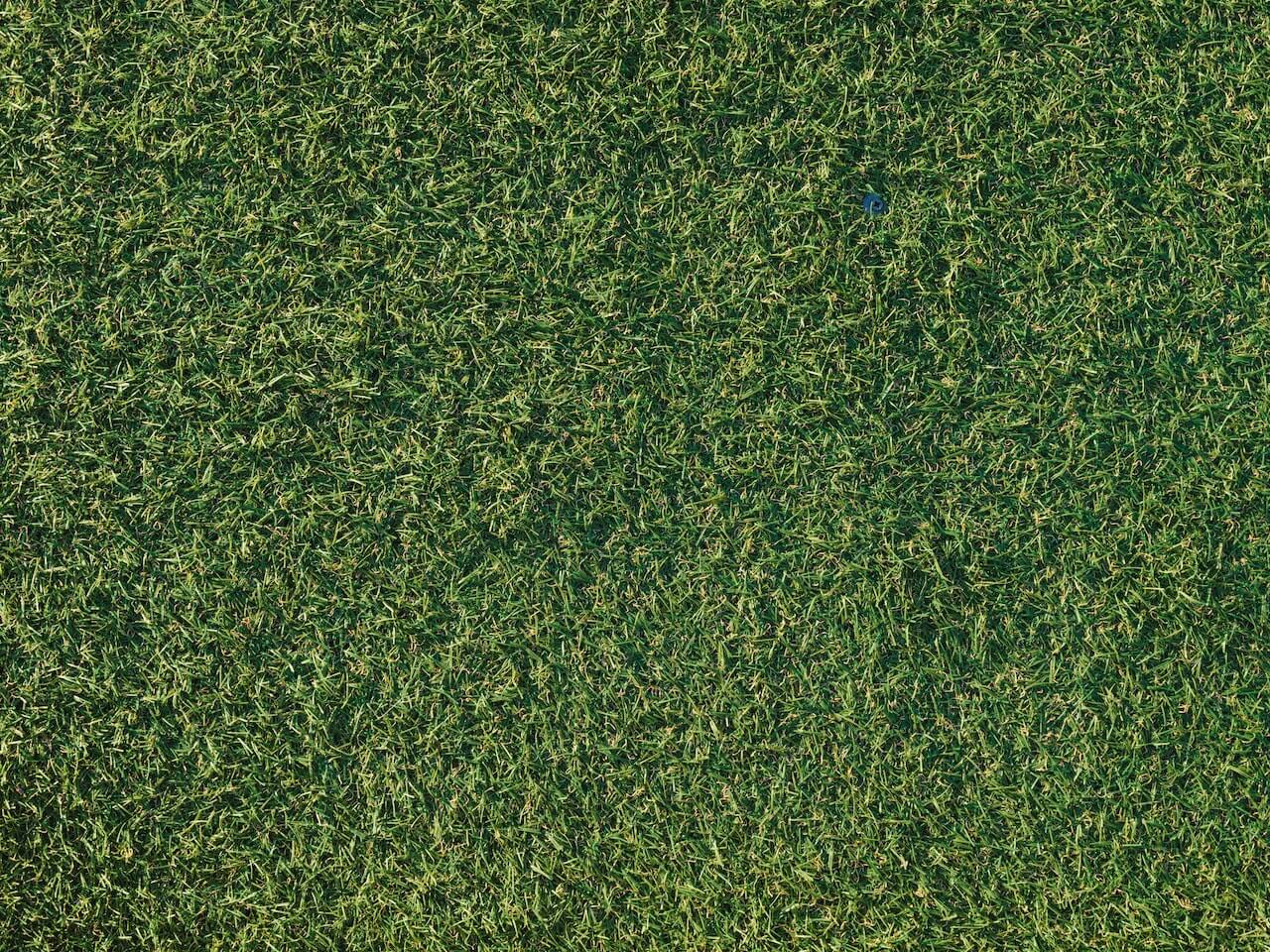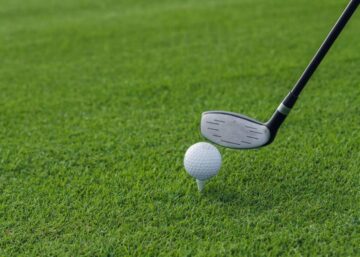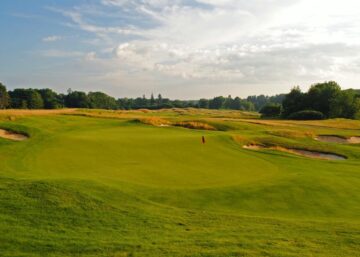Artificial grass, also known as synthetic turf, is becoming an increasingly popular alternative to natural grass in residential and commercial landscapes. This type of grass is made from synthetic fibers that are designed to look and feel like real grass. It is often used for sports fields, playgrounds, and landscaping projects, as it requires less maintenance and water than natural grass.
One of the main benefits of artificial grass is its low maintenance requirements. Unlike natural grass, which requires regular watering, mowing, and fertilizing, artificial grass only needs occasional cleaning to keep it looking its best. This can save homeowners and businesses a significant amount of time and money over the long term.
Another advantage of artificial grass is its durability. Synthetic turf is designed to withstand heavy foot traffic, harsh weather conditions, and other types of wear and tear. This makes it an ideal choice for areas that receive a lot of use, such as sports fields and playgrounds. Additionally, artificial grass does not require pesticides or herbicides, which can be harmful to the environment and to human health.
Benefits of Artificial Grasses
Artificial grasses, also known as synthetic turf, have become a popular alternative to natural grass. They offer numerous benefits, including:
- Low Maintenance: One of the biggest advantages of artificial grasses is that they require very little maintenance. Unlike natural grass, they don’t need to be watered, mowed, or fertilized regularly. This makes them an excellent choice for homeowners who don’t have the time or energy to maintain a natural lawn.
- Durability: Artificial grasses are designed to withstand heavy foot traffic and extreme weather conditions. They are made from high-quality materials that are resistant to fading, staining, and tearing. This means that they can last for many years without showing signs of wear and tear.
- Water Conservation: Another benefit of artificial grasses is that they don’t require any watering. This can help conserve water, especially in areas where water is scarce or expensive.
- Cost-Effective: While the initial cost of installing artificial grasses may be higher than that of natural grass, they can be more cost-effective in the long run. This is because they don’t require regular maintenance or watering, which can save homeowners a significant amount of money over time.
- Environmental-Friendly: Artificial grasses are also considered to be environmentally friendly. They don’t require any pesticides or fertilizers, which can be harmful to the environment. Additionally, they don’t produce any carbon emissions, making them an excellent choice for homeowners who want to reduce their carbon footprint.
Types of Artificial Grasses
Artificial grasses have come a long way since their initial introduction. Today, there are several types of artificial grasses available in the market, each with its unique features and advantages.
The following are some of the most popular types of artificial grasses:
- Nylon: This is the strongest and most durable synthetic grass available. It is perfect for high-traffic areas, making it ideal for sports fields and playgrounds.
- Polyethylene: This is the most common type of artificial grass. It is soft to the touch and looks very natural. It is perfect for residential lawns and landscaping.
- Polypropylene: This type of artificial grass is the least expensive. It is not as durable as nylon or polyethylene, but it is perfect for low-traffic areas.
- Polyester: This type of artificial grass is perfect for indoor use. It is non-allergenic and can be used in areas with high foot traffic.
Each type of artificial grass has its unique advantages and disadvantages. When choosing the right type of artificial grass, it is essential to consider factors such as the intended use, foot traffic, and budget.
Installation of Artificial Grasses
Artificial grass is an excellent alternative to natural grass, especially in areas where natural grass cannot grow or is difficult to maintain. Installing artificial grass is a simple process that can be done by anyone with basic DIY skills. Here are the steps involved in installing artificial grass: Step 1: Preparing the Area The first step in installing artificial grass is to prepare the area where the grass will be installed. This involves removing any existing grass or vegetation, as well as any rocks, debris, or other objects that may be present. The area should be leveled and compacted to ensure a smooth and even surface. Step 2: Laying the Base The next step is to lay the base for the artificial grass. This typically involves laying a layer of crushed stone or gravel, followed by a layer of sand. The base should be compacted and leveled to create a stable foundation for the artificial grass. Step 3: Installing the Artificial Grass Once the base is in place, it’s time to install the artificial grass. This involves rolling out the grass and cutting it to fit the area. The grass should be secured in place using stakes or adhesive, and any seams should be carefully joined to create a seamless surface. Step 4: Adding Infill Finally, infill should be added to the artificial grass to help it stand up and maintain its shape. Infill can be made from a variety of materials, including sand, rubber, or a combination of both. The infill should be evenly distributed across the surface of the grass, and brushed in to ensure it is fully integrated. Overall, installing artificial grass is a simple process that can be done by anyone with basic DIY skills. With the right preparation and the right materials, anyone can create a beautiful and low-maintenance artificial lawn that will last for years to come.
Maintenance of Artificial Grasses
Artificial grasses have gained popularity in recent years as an alternative to natural grass. They require minimal maintenance compared to natural grass, but still need some care to ensure they remain in good condition. Here are some tips for maintaining artificial grass:
- Remove debris: Regularly remove any debris such as leaves, twigs, and dirt that accumulate on the surface of the artificial grass. This can be done using a leaf blower or a stiff brush.
- Clean stains: If there are any stains on the artificial grass, clean them immediately using a mild detergent and warm water. Avoid using harsh chemicals as they can damage the grass fibers.
- Brush the grass: Brushing the grass regularly with a stiff brush will help to keep the fibers upright and maintain the natural look of the grass.
- Check for damage: Inspect the artificial grass for any damage such as tears or rips. If you notice any damage, repair it immediately to prevent it from getting worse.
- Keep pets away: If you have pets, it’s important to keep them off the artificial grass as much as possible. Pet urine can damage the grass fibers and cause unpleasant odors.
By following these simple maintenance tips, artificial grass can look great for many years. However, it’s important to note that artificial grass is not completely maintenance-free and will require some care to keep it in good condition.
Environmental Impact of Artificial Grasses
Artificial grasses have become increasingly popular in recent years as an alternative to natural grass for landscaping and sports fields. While they offer several benefits, including low maintenance and durability, there are also concerns about their environmental impact. One of the main environmental concerns associated with artificial grasses is their production. The manufacturing process involves the use of petroleum-based materials, which contribute to greenhouse gas emissions and other pollutants. Additionally, the production process requires significant amounts of energy, which contributes to the depletion of natural resources. Another concern is the disposal of artificial grasses. While they are designed to last for many years, they will eventually need to be replaced. When this happens, the old turf is typically disposed of in a landfill, where it can take hundreds of years to decompose. This can contribute to environmental problems such as soil pollution and the release of greenhouse gases. There are also concerns about the impact of artificial grasses on wildlife. Natural grass provides habitat and food for a variety of animals, including insects, birds, and small mammals. Artificial grasses, on the other hand, do not provide the same benefits and can disrupt local ecosystems. Despite these concerns, there are steps that can be taken to minimize the environmental impact of artificial grasses. For example, manufacturers can use more sustainable materials and production methods, and homeowners and businesses can dispose of old turf in an environmentally responsible manner. Overall, while artificial grasses offer several benefits, it is important to consider their environmental impact and take steps to minimize any negative effects.
Cost Comparison of Artificial Grasses vs. Natural Grasses
One of the most significant factors in choosing between artificial grass and natural grass is the cost. While artificial grass may have a higher upfront cost, it can save homeowners money in the long run.
Here are some factors to consider when comparing the cost of artificial grass and natural grass:
- Installation: The cost of installing artificial grass is typically higher than the cost of installing natural grass. This is because artificial grass requires a base layer of crushed stone and a layer of sand or rubber infill to provide stability and drainage. Natural grass, on the other hand, only requires soil preparation and seed or sod installation.
- Maintenance: Artificial grass requires very little maintenance compared to natural grass. With natural grass, homeowners must regularly mow, water, and fertilize the lawn. Artificial grass only requires occasional brushing and rinsing to remove debris.
- Water Usage: Natural grass requires a significant amount of water to stay healthy and green, especially in dry climates. Artificial grass does not require any water, which can save homeowners money on their water bill.
- Durability: Artificial grass is more durable than natural grass and can last up to 20 years with proper maintenance. Natural grass, on the other hand, may need to be replaced every 10-15 years due to wear and tear.
Overall, while artificial grass may have a higher upfront cost, it can save homeowners money in the long run due to its low maintenance and water usage. Additionally, artificial grass can provide a more durable and long-lasting lawn that requires less upkeep and maintenance than natural grass.
Conclusion
The use of artificial grasses has become increasingly popular in recent years, and for good reason. They offer a low-maintenance and eco-friendly alternative to traditional grass lawns, making them an attractive option for homeowners, businesses, and municipalities alike.
One of the key benefits of artificial grass is its durability. Unlike natural grass, which requires regular watering and mowing, artificial grass can withstand heavy foot traffic and extreme weather conditions without showing signs of wear and tear. This makes it an ideal choice for sports fields, playgrounds, and other high-traffic areas.
Another benefit of artificial grass is its water-saving properties. With droughts becoming more common in many parts of the world, artificial grass can help conserve water and reduce the strain on local water supplies. Additionally, because it doesn’t require pesticides or fertilizers, it can help reduce the amount of harmful chemicals that end up in our soil and waterways.
While there are some concerns about the environmental impact of artificial grass, particularly when it comes to disposal at the end of its lifespan, overall it is a viable and sustainable option for many applications. As technology continues to improve, we can expect to see even more innovative uses for artificial grass in the future.







